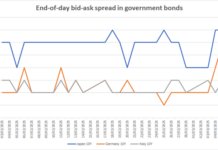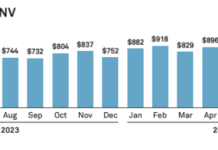S&P Global Ratings has raised its unsolicited long-term foreign and local currency sovereign credit ratings for Italy to BBB+, with a stable outlook. Short-term ratings have been affirmed as A-2.
The change has been made despite an acknowledgement of heightened uncertainty for global growth and trade.
The impact of US tariffs on European imports were highlighted as an important factor in the agency’s rating process. Upcoming 10% tariffs are expected to cut approximately 0.2% off of eurozone GDP, however S&P believes that Italy is in a strong position to weather the impact. The country’s net external creditor position has risen to 15% of GDP over the last five years, S&P stated, recovering close to pre-pandemic levels.
Additionally, corporate and household balance sheets have also improved as credit to the private non-financial sector has declined. Currently, net asset positions of Italian households are more than five times the GDP.
While changing US demand will have an impact, S&P notes that Italy’s largest export market, Germany, has increased government spending on defense and public infrastructure to 20% of its GDP. This will have a “positive ripple effect”, the agency explains, expecting to see further use of intra-EU trade and similar initiatives in other European countries.
Italian government debt remains high, measuring 129% of GDP at the end of 2024. However, S&P expects this to stabilise from 2028. This is being addressed through the country’s engagement with the Economic and Monetary Union, which will help to protect the region from such credit weaknesses.
The country’s credit strength is also boosted by the European Central Bank, which has remained credible during declining inflation. S&P believes that the ECB is capable of counteracting disinflationary pressures in the event of further external shocks to the European economy.
Further positive changes to Italy’s credit rating could be made if the country continues to reduce its budget deficit or if its reforms around structural economic challenges prompt more than 1% economic growth.
A downgrade would result from significant deterioration of Italy’s economic, external and budgetary conditions – which could be driven by the continued US tariff trade shock and its impact on consumer and business confidence and Italy’s budgetary positions.
©Markets Media Europe 2025

























